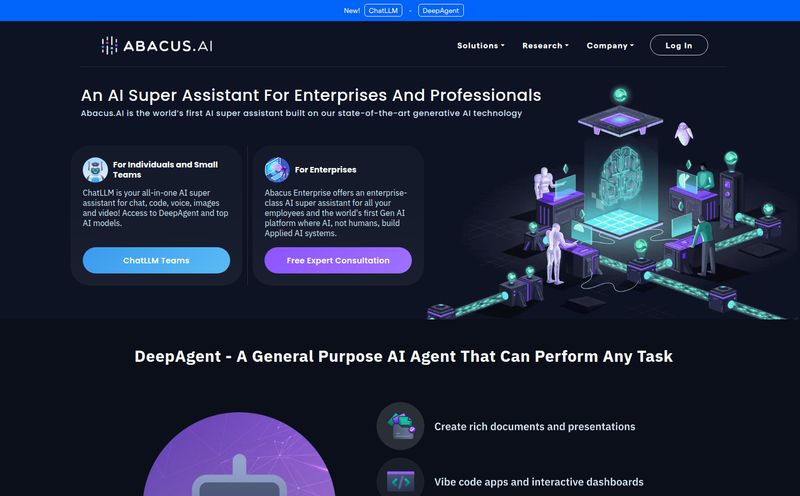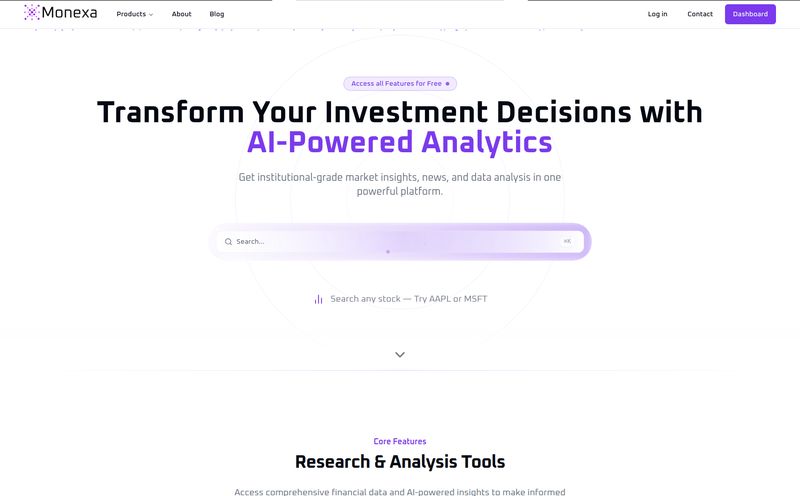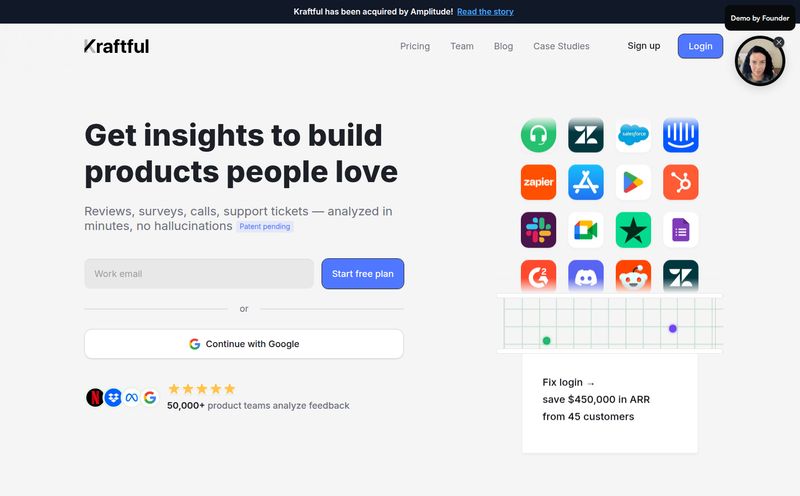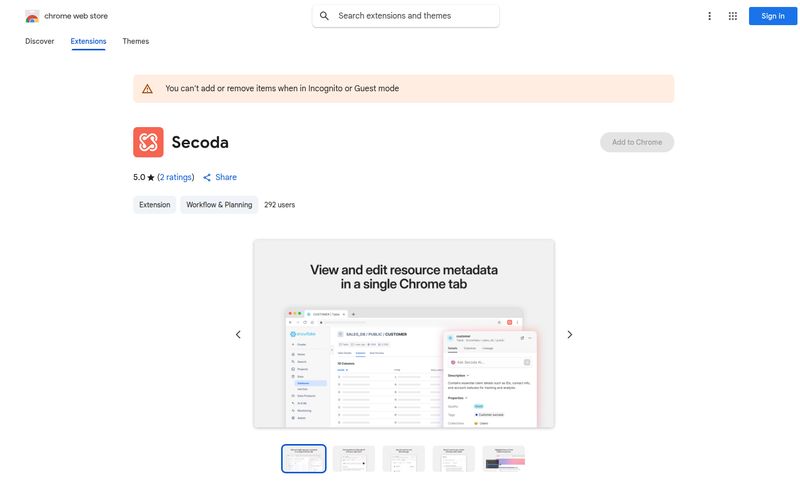I’ve been around the digital marketing and tech block a few times. I've seen trends come and go, from the QR code craze (the first time) to the meteoric rise of short-form video. But one trend that always gets my attention is the application of AI in super-niche, practical ways. We’re not talking about Skynet here. We're talking about tools that solve real problems.
So, when I stumbled upon Avais, an AI-powered app for volleyball performance analysis, my curiosity was definitely piqued. Volleyball, for me, has always been this fascinating mix of raw power, delicate strategy, and pure athleticism. I’ve spent countless hours in gyms, both as a (very average) player and as a fan, and I know the frustration. You feel like the other team's middle is getting all the kills, but you can't prove it. You think your serves are hitting the right zones, but is that just confirmation bias?
This is the exact problem a tool like Avais aims to solve. But here’s the kicker… when I went to check it out, I was greeted by a big, bold “Under Construction” sign. A dead end? Not for a blogger. To me, that’s just part of the story. So, let’s talk about what Avais is, what it could be, and whether it’s a project to keep on your radar.
So What Exactly is Avais Supposed to Be?
At its core, Avais is designed to be an eye in the sky for the volleyball court. Using your device's camera, it employs computer vision and AI to track everything that matters in real-time. Think of it less as a simple recording app and more like having a dedicated, hyper-observant statistician watching every single second of the game.
Based on the info I could dig up, it focuses on three main things:
- Court Line Tracking: It knows where the lines are. In or out? No more arguments.
- Player Position Tracking: It follows players, mapping their movements, defensive positions, and rotations.
- Ball Hit Tracking: This is the big one. It registers every serve, pass, set, and attack.
The whole point is to take this raw data and transform it into actual, usable insights. It’s not just about counting spikes; it's about understanding the story of the game through numbers.

Visit Avais
This is huge. For years, coaching has been a mix of expert intuition, gut feelings, and what you could catch on a grainy iPad recording from the stands. This promises to add a layer of objective truth to the chaos of a six-on-six rally.
The Promise of Data-Driven Volleyball
Why does this even matter? Because data doesn't lie. A coach’s eye is good, but it's not infallible. It can't watch the blocker’s footwork, the setter’s release point, and the off-ball movement of the outside hitter all at once. The human brain just isn't built for that kind of parallel processing.
But an AI is. Imagine a post-game report that tells you:
- “Your setter distributed the ball to the outside hitter 65% of the time when the pass was perfect.”
- “Your libero’s average defensive position was a foot too far to the left against their strongest attacker.”
- “80% of your service errors happened in the third set, suggesting fatigue.”
That kind of feedback is gold. It moves you from “We need to play better defense” to “Jane, you need to take one step to your right on serve receive.” It’s specific, actionable, and removes the emotional guesswork. This is the kind of stuff that pro and top-tier college teams like those in the NCAA pay a fortune for. Avais seems to want to bring that power to everyone.
The Good, The Bad, and The… Under Construction?
Alright, let’s get into the nitty-gritty. No tool is perfect, and even in its conceptual stage, Avais has some clear pros and cons. I’ve always believed in looking at the whole picture, not just the glossy promises.
The Upside: Your New Data-Driven Teammate
The main advantage is obvious: democratizing high-level sports analytics. Club teams, high schools, and even dedicated players could potentially access insights that were once reserved for elite programs. It gives players a sense of ownership over their improvement and equips coaches with objective data to back up their instruction. It’s a tool for both ends of the clipboard, which is a smart move.
The real-time aspect is also a massive selling point. Getting instant feedback is way more powerful than waiting a day for someone to manually chart a game video. Immediate reinforcement—or correction—is how we learn best.
Potential Fumbles and Red Flags
Now for the reality check. The first hurdle is that it requires a device with a camera. Obvious, I know, but it also means the quality of your data is tied to the quality of your setup. Anyone who's tried to film a sports game knows the pain. Bad lighting, a shaky tripod, the sun in the wrong spot… all these things could potentially throw the AI for a loop. The information I found confirms that accuracy can be affected by lighting and camera angle, which is a significant real-world challenge.
But the biggest red flag, of course, is the “Under Construction” page. This introduces a big question mark. Is the project paused? Are they in the middle of a major pivot? Is it a classic case of a great idea that’s struggling with the execution? As someone who follows the startup world, this could mean anything. It’s a bummer for anyone wanting to try it right now, but it also makes me more curious to see what, if anything, comes next.
Let's Talk Money: What's the Price of Avais?
This is the million-dollar question, isn't it? Or maybe the $9.99/month question. Currently, there is zero information on pricing. The pricing page is a ghost town. This leaves us to speculate.
I could see a few models working:
| Model | My Take |
| Freemium | Offer basic tracking for free, with advanced analytics (like trend analysis or opponent scouting) behind a paywall. This is a popular route for apps. |
| Subscription (Per User) | A monthly or annual fee for individual players to track their own stats. Could be popular with aspiring college athletes. |
| Subscription (Per Team) | A higher-priced monthly/annual plan for a whole team, managed by a coach. This makes the most sense for clubs and schools. |
| One-Time Purchase | Less likely in today's SaaS world, but maybe they'll offer a 'pro' version for a flat fee. I doubt it, though. |
Without an official word, it's all just a guessing game. My money is on a team-based subscription model. It’s sustainable and aligns with their target market of coaches and clubs.
My Final Spike on Avais (For Now)
So, where does that leave us? Avais is an incredibly promising concept. The idea of putting an AI stats-keeper in the hands of every volleyball coach and player is, frankly, awesome. It taps directly into the “Moneyball” effect we’ve seen transform professional sports, from baseball to basketball (see what the NBA says about analytics).
However, an idea is only as good as its execution. The technical challenges of accurate computer vision in a fast-paced, sometimes poorly-lit gymnasium are not trivial. And the current “under construction” status casts a shadow of uncertainty over the whole project.
My verdict? I’m cautiously optimistic. I’m not ready to call it a game-changer, but I’m not writing it off as vaporware either. I’ve bookmarked the site, and I’ll be keeping an eye out for any updates. If Avais can get over the net and deliver on even 80% of its promise, it could seriously change how the next generation of volleyball players learns the game. For now, we wait and watch.
Frequently Asked Questions about Avais
- What is Avais?
- Avais is pitched as an AI-powered application that uses your phone or tablet's camera to analyze a volleyball game in real-time. It's designed to track player positions, court lines, and ball hits to provide data-driven insights for players and coaches.
- How does Avais track everything?
- It uses a technology called computer vision. The AI is trained to recognize patterns—like the shape of a volleyball, the lines on the court, and the movement of players—and translate those visual patterns into statistical data.
- Is Avais available to download now?
- As of late 2023, the official website for the tool is showing an “Under Construction” message. This suggests it is not currently available for public download or is in a pre-launch or redevelopment phase.
- Do I need special equipment to use it?
- The core requirement is a device with a decent camera, like a smartphone or tablet. For best results, you would likely also need a tripod to keep the camera steady for a consistent view of the court.
- How much does Avais cost?
- There is currently no official pricing information available. The cost could range from a free version with limited features to monthly or annual subscriptions for individuals or teams.
- Who would benefit most from a tool like Avais?
- The primary audience seems to be competitive volleyball players and coaches at the club, high school, or collegiate level who want to use objective data to improve their performance and strategy.
Reference and Sources
- Information on Avais was sourced from publicly available data about the app's intended function. The official website is currently under construction.
- For more on the impact of analytics in sports, you can read about its transformation of professional basketball here: How analytics transformed the NBA from a game of observation to a science of optimization.



